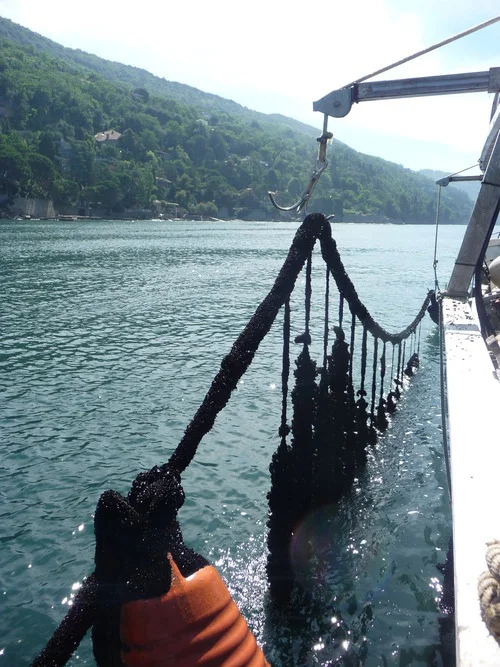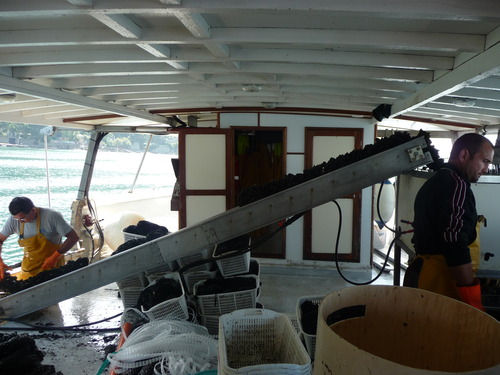Our chariot.
I go to a school where sometimes class consists of talking about mussel semen. And sometimes that class just happens to take place on a boat in a body of water in between Italy, Croatia and Slovenia. And sometimes, in the name of education, one finds oneself murdering and eating a raw mussel. I’m just devoted to my education.
And so is Reena.
When it comes to mussels, I was in need of alot of education. Case in point: mussel farms. Did you know that mussels grow in underwater farms? I certainly didn’t.
Farming and reproduction all take place in the sea, which in this particular case, is the Gulf of Trieste. There are 17 co-ops that work in the 15-18 meters deep water and grow mussels. They take tiny mussels, the size of a newborn baby’s thumbnail, and fill them into long plastic sacks shaped like ropes. They place them under the water where in April the males and females will both release sticky fluids that naturally attach the mussels to one another.
Mussel ropes.
Commercial size mussels are roughly 1 year old. When ready for consumption, the ropes are hauled up using a crane attached to the boat and then separated and cleaned on board with machinery.
Mussels being hauled on board, cleaned and processed.
In Trieste, not just anyone can be a mussel farmer. One needs special authorization from the government (the last permit was issued over 10 years ago). As a kilo of mussels sells for roughly 50 eurocents wholesale in those parts, the farmers have formed co-ops to help cut out the middlemen and increase their share of profits. Their plots are 10 floating barrels and 10 rows with 1 barrel to another counting as a field. The particular co-op that we met with produce 300 tons of mussels each year.
This is what a mussel farm looks like. Barrels as far as the eye can see!
I think the UNISG students might actually have eaten all 300 tons of them at our mussel-themed seaside lunch provided by the co-op.






